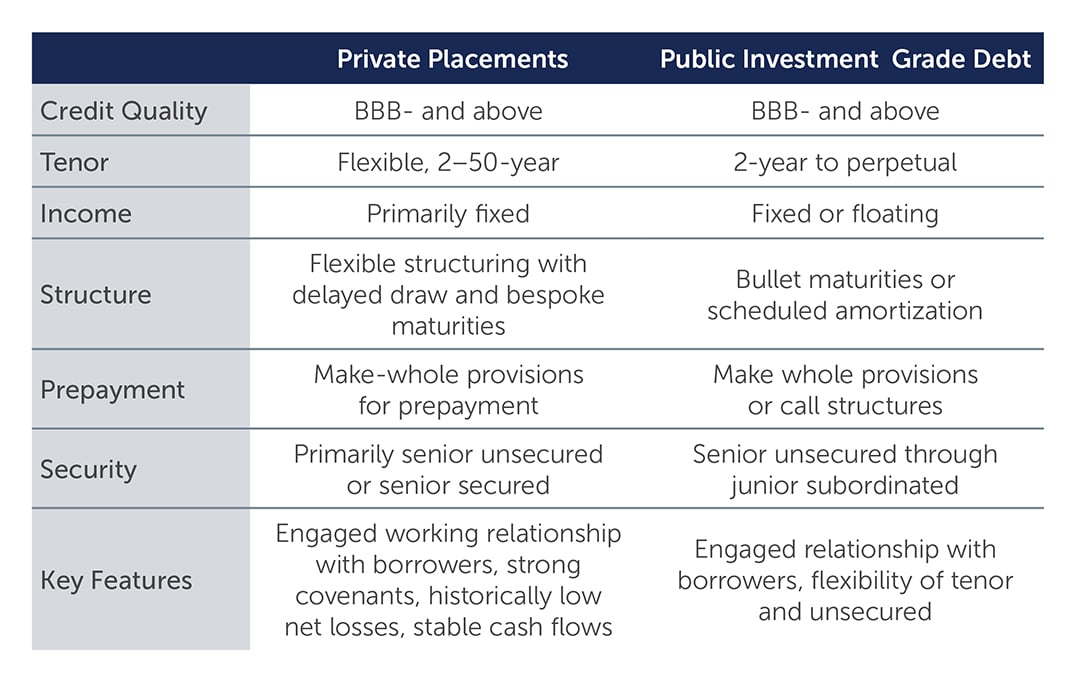The Growing Opportunity in Private Placements
Private placements have become an established source of funding for borrowers. Given the potential for incremental returns, diversification, and downside protection, investors are increasingly turning to this asset class too.
Given the relatively higher yields on offer, institutional investors are increasingly considering investments in illiquid private markets—including private placements. For insurance companies and pension funds, in particular, these markets can offer a number of potential advantages, ranging from an illiquidity premium over public markets to enhanced diversification, risk protection, and positive asset-liability matching attributes.
What are Private Placements?
Private placements are essentially notes and loans sold only to qualified institutional buyers (QIBS). Historically an investment grade (IG) market, private placements tend to have intermediate to long-term maturities, and are mostly fixed rate (Figure 1). For issuers, financing via the private market has potential advantages—from confidentiality considerations to the flexibility of issuing debt across a wide range of sizes, maturities, and currencies.
The market also spans a range of geographies, credits and sectors—from universities, sports-related transactions and financials to more esoteric products such as structured finance, credit-tenant lease transactions and aviation deals.
Figure 1: Key Characteristics of Private Placements
 Source: Barings. As of February 29, 2024.
Source: Barings. As of February 29, 2024.






